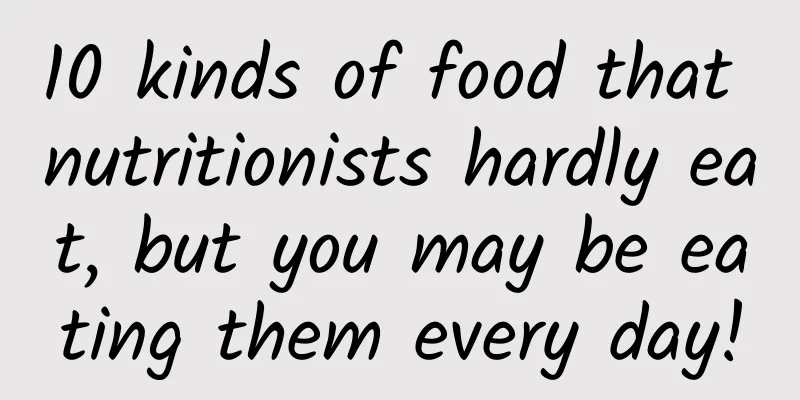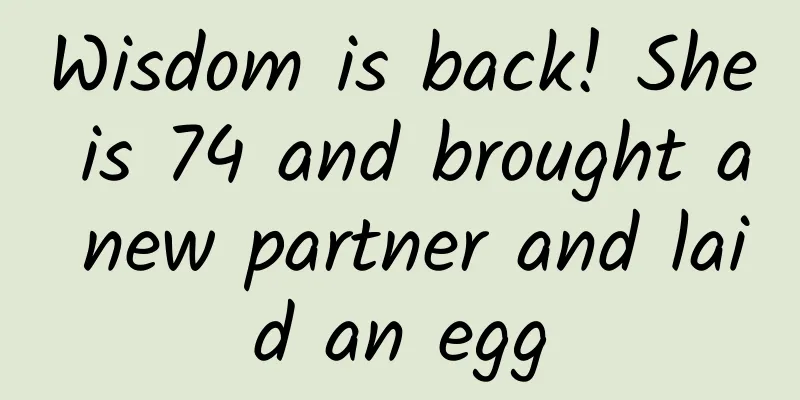10 kinds of food that nutritionists hardly eat, but you may be eating them every day!

|
There are many foods that nutritionists almost never buy or eat, but many people eat them every day. This article lists a few of them. For your own health, I really advise you to eat less or not eat them. 01 Oil Pressing Homemade oil refers to oil squeezed from small oil workshops. Compared with most finished oils, it has not undergone refining processes such as deacidification, decolorization, and deodorization. It is easy for aflatoxin (carcinogen) to exceed the standard. During cooking, it is also easy to produce peroxides that accelerate human aging, as well as trans fatty acids that are not good for cardiovascular health. Copyright image, no permission to reprint 02 Honey water Honey is 75.6% sugar, 22% water, 1.9% fat, and the remaining 0.5% is other ingredients that may be beneficial to health. It is better to drink honey with water. Each time you can consume fewer ingredients that are beneficial to health, so don't expect to beautify your skin by drinking honey water. The sugars in honey are mainly fructose and glucose. Eating too much fructose will increase the risk of gout and fatty liver. Honey is directly rich in glucose, so drinking honey water can also easily increase blood sugar. 03 Brown sugar water Some friends feel better after drinking brown sugar water when they have dysmenorrhea. This may be because the temperature of hot water promotes vasodilation. Drinking boiled water can also have the same effect. Copyright image, no permission to reprint Drinking brown sugar water to supplement iron is not reliable. This is because although the iron content in brown sugar is comparable to that in lean beef, the iron in brown sugar is trivalent iron, which is not easily absorbed and has a very low absorption rate. Besides, brown sugar is drunk with water, so you won't eat as much as beef. 04 juice When fruit is squeezed into juice, the cell walls are destroyed and the fructose, glucose and sucrose in the cells are released. Drinking it down in one gulp can easily raise blood sugar. The juicing process comes into contact with the air and the temperature of the juicing equipment increases, which will increase the loss of vitamin C. If there is a filter residue, it will also increase the loss of dietary fiber, so try to drink less juice. 05 Pork Belly Dongpo pork, steamed pork with rice flour, stir-fried pork, twice-cooked pork, braised pork, and pork with preserved vegetables are all really delicious. Unfortunately, pork belly is rich in saturated fatty acids, and excessive intake of saturated fatty acids is not good for cardiovascular health. Copyright image, no permission to reprint The "Dietary Reference Intakes of Chinese Residents" recommends that daily saturated fatty acid intake should be controlled within 7% of energy. Taking white-collar women as an example, it should not exceed 14 grams per day. Two large pieces of braised pork are 100 grams, and the saturated fatty acid content is 11 grams, so the pork belly can only be eaten occasionally when you are craving for it. 06 Coconut Oil Some people say that eating coconut oil can help you lose weight. The mechanism may be because it is rich in medium-chain fatty acids. Unfortunately, the medium-chain fatty acids in coconut oil are mainly lauric acid, and its main metabolic pathway in the body is to synthesize fat and accumulate. Coconut oil, like other oils, produces 9 kcal of energy per gram, so don't expect to lose weight by eating coconut oil. Moreover, its saturated fatty acid content is higher than that of lard, butter, and palm oil. 07 Hot food The International Agency for Research on Cancer clearly pointed out that hot drinks above 65°C will damage the esophageal mucosa and increase the risk of esophageal cancer, so food, soup and tea should not be consumed when they are hot. 08 Spicy Strips Spicy strips are definitely a representative of high oil and high salt. For example, the fat content of a certain spicy strip is 25 grams per 100 grams, and the net content of a pack is 106 grams, which means the fat content is 26.5 grams. The Chinese Residents' Dietary Guidelines recommend a daily intake of cooking oil of only 25 to 30 grams. Eating a pack of spicy strips is equivalent to the recommended daily intake of cooking oil. The sodium content of this spicy strip is 2740 mg/100 g, and the sodium content of one pack is equivalent to 7.3 grams of salt. The "Three Reductions and Three Healths" of the Healthy China Action recommends that the daily salt intake should not exceed 5 grams, which means that after eating a pack of spicy strips, you will consume nearly a day and a half of the salt limit. 09 Plum Plums can be said to be the "salt king" among snacks. For example, a certain type of plum has 9342 mg of sodium per 100 grams, which is equivalent to 23 grams of salt. Eating 25 grams will consume 5.8 grams of salt, which exceeds the daily salt limit (5 grams). Copyright image, no permission to reprint 10 Whole grains Some whole grain biscuits have large pieces of bran, but they don't taste rough. That's because a lot of oil is added, and anyone who eats them will get fat. Some whole grain biscuits have a fat content of up to 34 grams per 100 grams, and the oil is mainly refined vegetable oil and shortening, which is high in saturated fatty acids. You must avoid them when you see them. Copyright image, no permission to reprint Author: Gu Chuanling, Deputy Secretary General of Capital Health Nutrition and Gourmet Society, Registered Nutritionist Source: Health Times The cover image and the images in this article are from the copyright library Reproduction of image content is not authorized |
<<: Why are there no mosquitoes whose bites don’t itch?
>>: How do tower cranes grow taller?
Recommend
What is online promotion? Do you know several promotion channels?
The Internet is an information gathering field, t...
Java's concise way
[[143085]] Computer scientists place great value ...
Samsung completes acquisition of Harman International and enters automotive electronics sector
According to foreign media reports, Samsung Elect...
What does Meilishuo do? Case analysis of SEO optimization of Meilishuo website!
Dongguan SEO Feng Chao came into contact with the...
Angel Research - Private Circle Live Broadcast
Introduction to the real-time live broadcast reso...
Revealing the secrets of Apple’s official iPhone data cable: expensive and poor quality!
Apple’s hardware quality is very good, but there ...
What are the best attributions for app promotion at present?
The App has been developed, the advertising has b...
This festival-exclusive symbol of "red and green" has its origins in China?
Even if you have never paid much attention, you m...
5 reasons for poor execution and how to solve them
When communicating with CEOs of foreign companies...
In April, domestic mobile phone shipments reached 41.728 million units, with 5G mobile phones accounting for nearly 40%
Data from the China Academy of Information and Co...
Safety secrets on the return journey during the Spring Festival travel rush: Why don’t high-speed trains require seat belts?
There are seat belts on airplanes and cars, but w...
What are the basic functions of Huizhou WeChat catering mini program and the function list of the catering mini program?
Why do many catering companies now choose to deve...
iOS 17.2 released with a wave of new features
Early this morning, Apple pushed the iOS 17.2 Bet...
Don’t want to drink milk? Try these “milk substitutes” →
For most people of this generation, the main sour...
Why Surface Pro 3 is both loved and hated
Microsoft has released the third generation of Sur...









